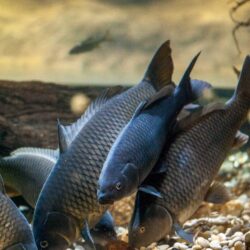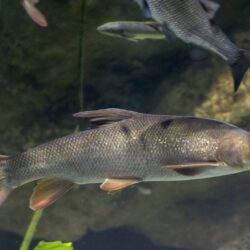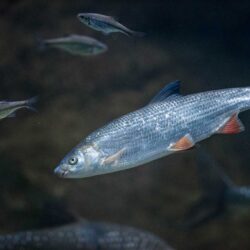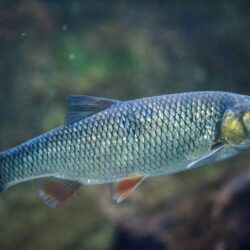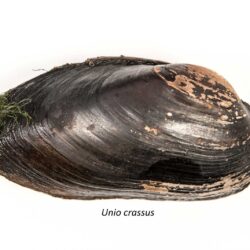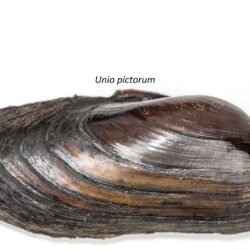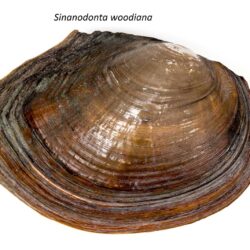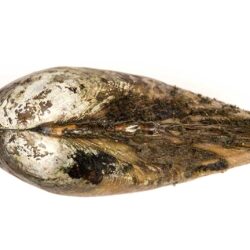Middle course
Unlike the upper course, the middle course is characterised by slower flowing waters with temperatures up to 20°C, a lower oxygen concentration, and a gravelly to sandy river bed. The aquatic vegetation contains mosses and diatomaceous algae, with the appearance of green algae, filamentous bacteria and fungi. Invertebrates include snails and numerous insect larvae. Due to the suitable living conditions, there is a higher diversity of life there, and the most fish species are found here.
Carp
(Cyprinus carpio)
Barbel(Barbus barbus)
Nase(Chondrostoma nasus)
Chub(Squalius cephalus)
Molluscs
The Kupa River is inhabited by five species of indigenous and three species of invasive molluscs. In Karlovac County, the most abundant species is the protected thick-shelled river mussel (Unio crassus) that inhabits the middle and lower course of the Kupa River. Other species from the family are the painter’s mussel, Chinese pond mussel, duck mussel, swollen river mussel and depressed river mussel. The zebra mussel Dreissena polymorpha and Asian clam Corbicula fluminea are alien species. The species Unio elongatus is common in the Mirna River in Istria. Molluscs from the family Unionidae play an important role in the spawning of the bitterling (Rhodeus amarus). The female bitterling uses a specialised organ called the ovipositor to lay her eggs in the shell of a live mussel, and the small bitterling fry leave the shell two to three weeks later. These fish have an important role in the distribution and development of glochidium, the larval stage of certain mussel species (such as the duck mussel) that live on the gills of fish for the first few months of their life.
